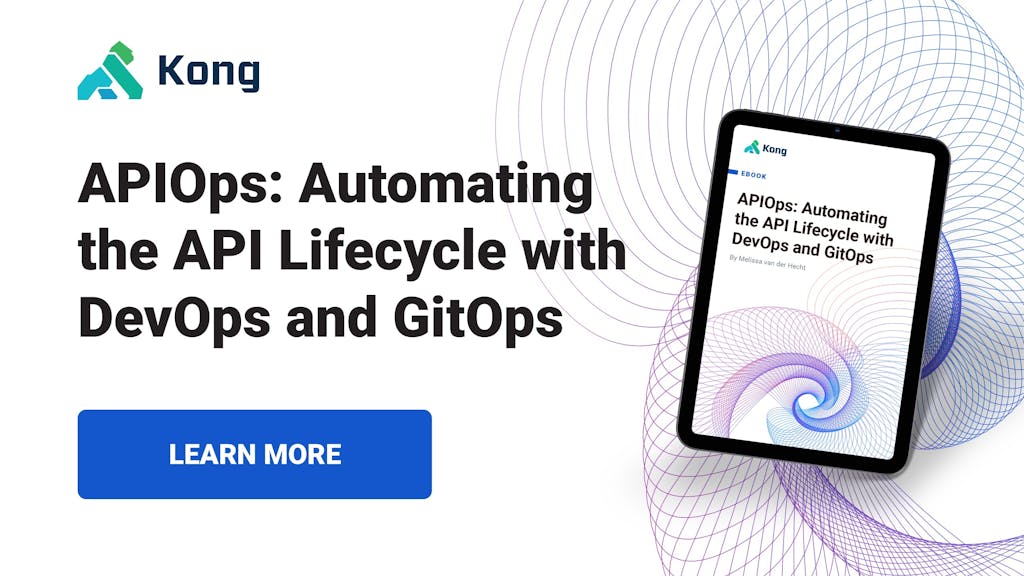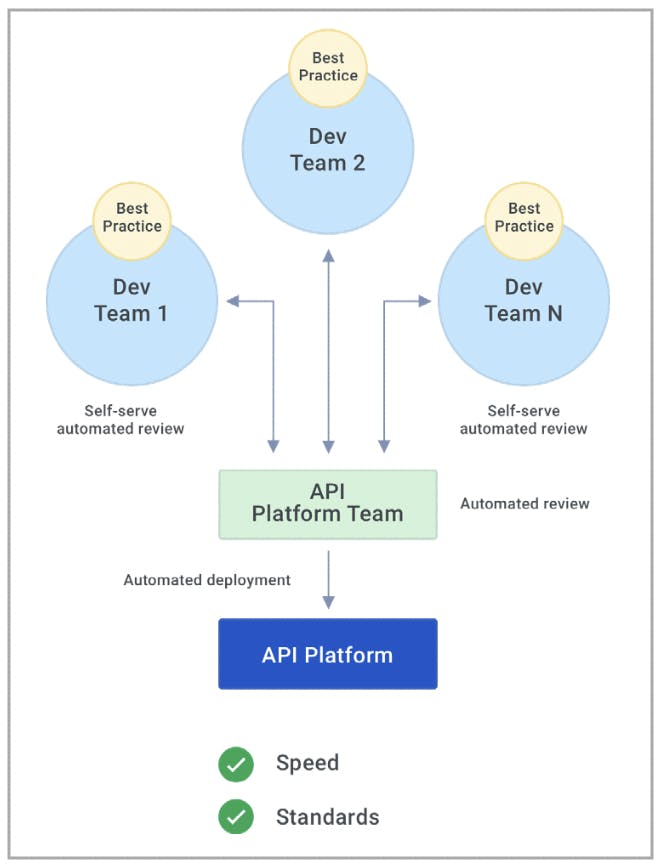Today, Application Programming Interfaces (APIs) and microservices are the de-facto standard for building and connecting modern applications. APIs are no longer just a delivery mechanism but have become the product itself.
API lifecycle management refers to the comprehensive, step-by-step process of planning, developing, implementing, testing and versioning an API. Considering the number of APIs in any business today, their pace of change, variety of use cases, developers and consumers, traditional manual approaches to API management fall short. Thus, organizations need to introduce modern automation techniques to efficiently manage the API lifecycle and deliver APIs with continuous quality as well as speed.
In this two-part blog series, we will double-click on the need for both speed and quality for your API delivery and how APIOps brings both of them to API lifecycle management.

Need for Speed
Success in today's digital economy is defined based on a company's ability to quickly deliver new customer experiences. According to the latest Digital Innovation Benchmark survey, 62% of technology leaders fear they are at risk of being displaced by competitors who innovate more quickly. That's why companies need to continuously reimagine and optimize at every level of their API and service delivery process in an effort to accelerate their speed of innovation.
Companies need to ensure that their APIs are well designed, documented, discoverable and accessible so that their consumers (both internal and external) can easily reuse them. They also need to ensure their APIs are scalable and performant to deliver a reliable consumer experience. But the relentless need for speed may come at the cost of compromising quality. For example, during the recent crisis, Zoom, a popular video conferencing platform provider, managed to successfully scale its platform as its usage increased, but it also ran into major security issues as a result that needed to be addressed immediately.
Need for Quality
In the API and microservices world, quality refers to implementing and maintaining proper API governance to ensure all your APIs are consistent, compliant and secure. As companies grow, they need to scale to hundreds and even thousands of APIs. These APIs expose sensitive data and application resources to the outside world, making them easy targets for attackers. By 2022, according to Gartner (via CSO), API abuses will become the most frequent attack vector.
This means companies need to consistently add governance at every stage of the API lifecycle, right from the time when they design their API to the point at which they publish it to consumers. But implementing API governance can slow down the development process. This is primarily due to a lack of support for developers in following best practices from the beginning as well as manual QA processes such as API and change review boards that must meet to review and approve development before work can continue.
Most businesses today are forced to trade off between the delivery speed and delivery quality of their APIs. So, how can we ensure that all our APIs can be managed and controlled in little time, with less human effort, without compromising the quality?
APIOps is the Answer
This is where automation comes into play, achieved through APIOps by enabling an end-to-end solution for API lifecycle management. APIOps is the complete end-to-end automation of the API lifecycle, combining DevOps and GitOps. It combines DevOps philosophies when it comes to iterative design and continuous testing, with GitOps philosophies in terms of automated, declarative deployments. By pairing it with the agile nature of these modern software development practices, you can embed modern automation practices to increase deployment speed and ensure compliance.

Diagram 1: APIOps: Speed and standards
This results in faster deployment of quality APIs, preventing the speed-quality trade-off common today. Gone are the days when frequent and long review meetings were held for API requests, costing a lot of time and manual effort. Organizations can now switch to APIOps and make the process of API lifecycle management automated, fast and more reliable than ever.
In the next blog, we will walk through what the API lifecycle looks like when following APIOps. To learn more about APIOps, please download the "APIOps: Automating the API Lifecycle With DevOps and GitOps" eBook today!





